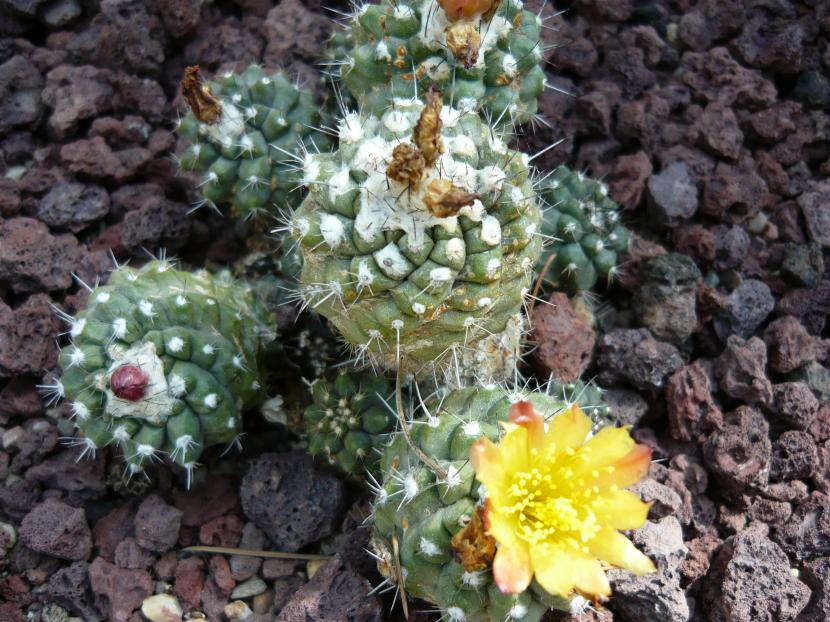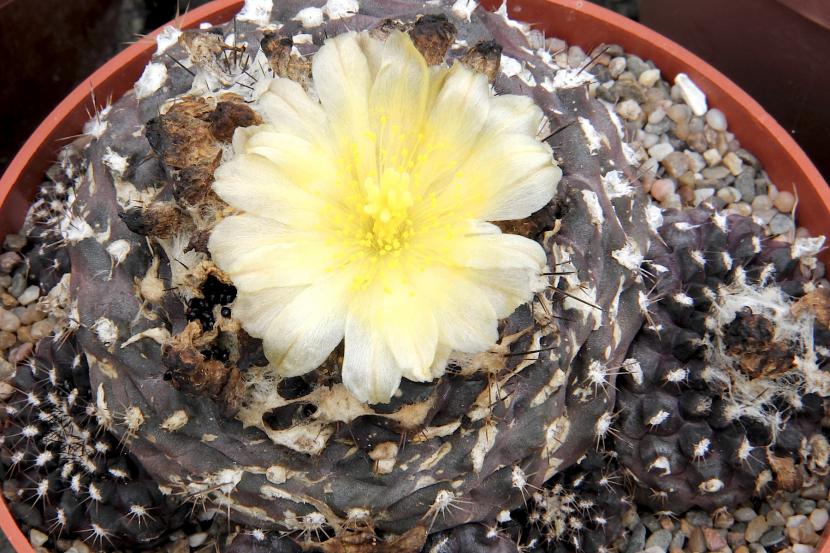
The Copiapoa genus is made up of about 26 species, one of the most beautiful being the Copiapoa humilis. But it is not only beautiful, it is also small. In fact, it is the perfect size to be grown in a pot throughout its life. And, in addition, it produces very beautiful flowers.
So what are you waiting for to get a copy? We will take care of explaining your care,
Features

Copiapoa humilis subsp. very tenuous
Copiapoa humilis is the scientific name of a endemic cactus of Atacama and Antofagasta in Chile which was described by Rodulfo Amando Philippi and published in Cactus and Succulents Journal in 1953.
It is characterized by having a fleshy, globose-cylindrical body of green or purple color covered with white spines (in young specimens) to black (adults) whose height is about 20-30cm. They have 7 to 13 marginals and 1-4 centrals. The ribs, 10-14 in number, are somewhat spirally. It produces flowers at the apex, about 3-4cm long, yellow and somewhat fragrant. The fruits are rounded and contain black seeds.
There are 6 varieties:
- C. humilis subsp. humilis: native of Taltal and Paposo.
- C. humilis subsp. australis: native of Huasco. It is thornier than the others.
- C. humilis subsp. longispin: native of Sierra Hornillos. It has spines longer than the others.
- C. humilis subsp. very tenuous: native of El Cobre (Antofagasta). It has a purple body.
- C. humilis subsp. tocopillana: native to Tocopilla, a very arid area.
- C. humilis subsp. varispinata: native to the north of Paposo, in the surroundings of the Iscuña valley.
Care

Copiapoa humilis subsp. varispinata
If we talk about its care, we can affirm without fear of being wrong that it is a cactus that is very easy to care for. In fact, It only needs us to place it outside, in full sun, and to water it only when the substrate is really dry. since it resists drought very well but not waterlogging. For this reason we have to use a soil that drains the water well, such as the pomx or the universal cultivation substrate mixed with perlite or river sand washed in equal parts.
Finally, you have to know that it can be grown outside the home throughout the year if the temperature does not drop below -2ºC.